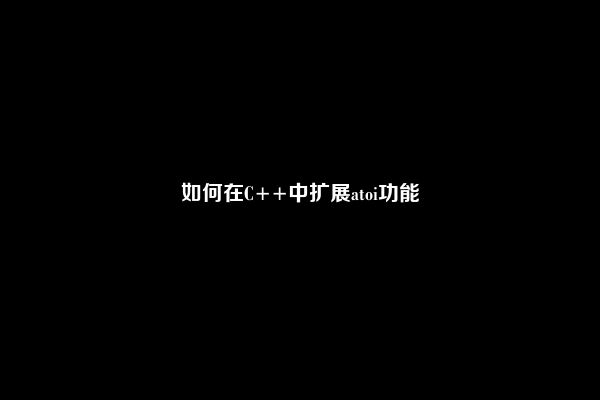要在C++中扩展atoi功能,可以使用自定义函数来实现类似的功能。以下是一个简单的示例代码:

#include <iostream>
#include <string>
int custom_atoi(const std::string& str) {
int result = 0;
int sign = 1;
int i = 0;
// Check for negative sign
if (str[0] == '-') {
sign = -1;
i++;
}
// Iterate through the characters of the string
for (; i < str.length(); i++) {
if (str[i] >= '0' && str[i] <= '9') {
result = result * 10 + (str[i] - '0');
} else {
// Invalid character encountered
std::cerr << "Invalid character found in input string" << std::endl;
return 0;
}
}
return sign * result;
}
int main() {
std::string input = "-12345";
int result = custom_atoi(input);
std::cout << "The result of custom_atoi is: " << result << std::endl;
return 0;
}
在上面的示例代码中,自定义函数custom_atoi接受一个字符串作为输入,并将其转换为整数。该函数首先检查输入字符串中是否存在负号,然后迭代处理每个字符,并将其转换为对应的数字。如果遇到非数字字符,则输出错误消息并返回0。最后,main函数演示了如何使用custom_atoi函数来将字符串转换为整数并输出结果。
通过类似的方法,您可以根据需要扩展atoi功能,例如添加更多的错误检查、处理更大范围的整数等。

网友留言: